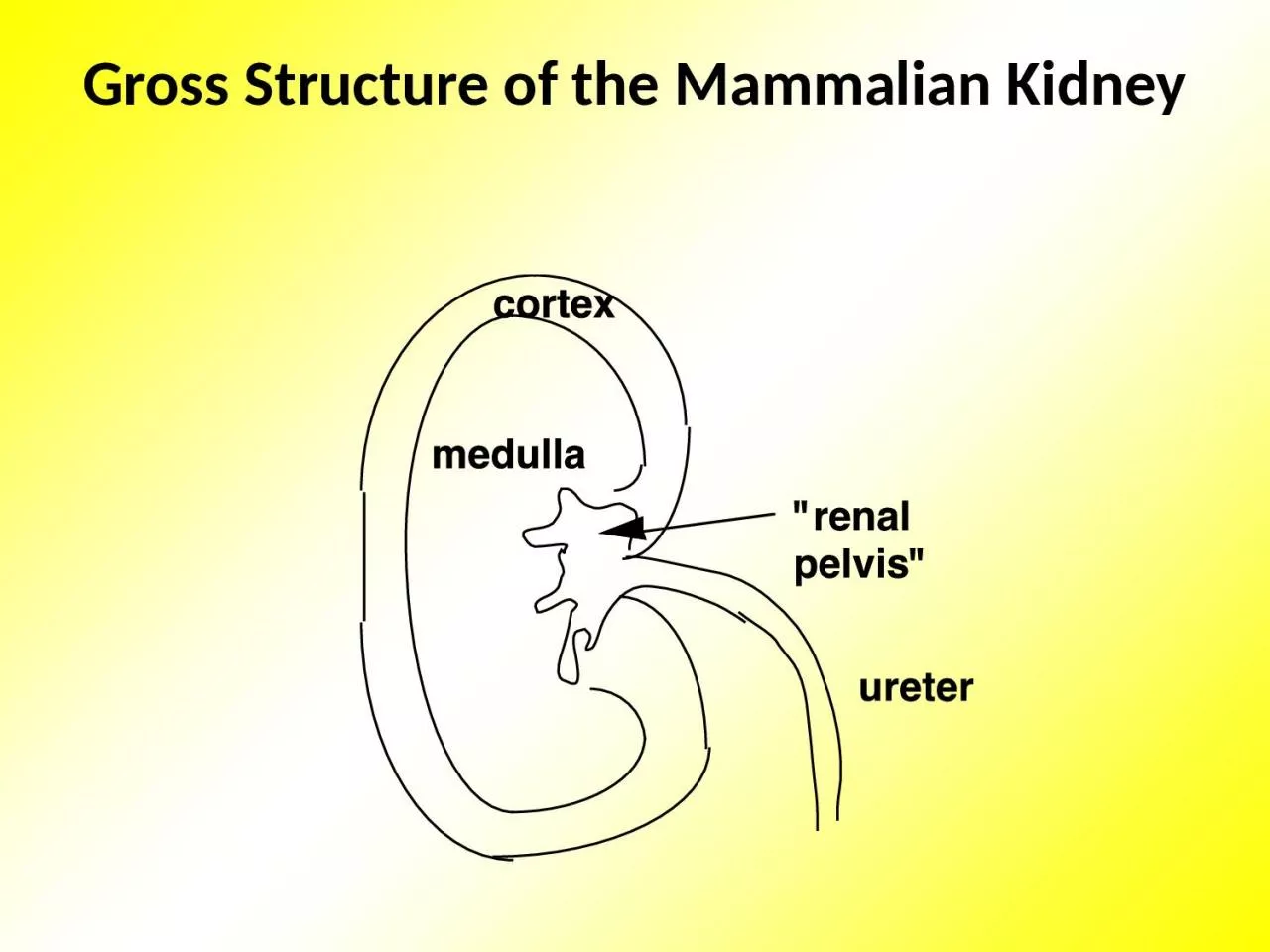

Nephron Anatomy The Filtration Unit the Glomerulus and Bowmans capsule Filtration and Molecular Characteristics Glomerular Filtration Autoregulation of Filtration Mechanisms of Autoregulation ID: 934953
Download Presentation The PPT/PDF document "Gross Structure of the Mammalian Kidney" is the property of its rightful owner. Permission is granted to download and print the materials on this web site for personal, non-commercial use only, and to display it on your personal computer provided you do not modify the materials and that you retain all copyright notices contained in the materials. By downloading content from our website, you accept the terms of this agreement.
Slide1
Gross Structure of the Mammalian Kidney
Slide2Nephron Anatomy
Slide3The Filtration Unit: the Glomerulus and Bowman's capsule
Slide4Filtration and Molecular Characteristics
Slide5Glomerular Filtration
Slide6Autoregulation of Filtration
Slide7Mechanisms of Autoregulation
Myogenic regulation
-- response to stretch
Tubular glomerular feedback
-- flow sensed by
juxtaglomerular apparatus
; chemical signaling to regulate
flow (
tubuloglomerular
feedback,
a form of autoregulation)
juxtaglomerular
apparatus (D)
Slide8Handling of Solutes by the Kidney
Metabolites that need to be eliminated:
Nitrogenous wastes
from amino acid and nucleic acid metabolism
Ammonia
(very toxic but easily removed in watery environments)
->
Urea
(requires considerable water; mammals & others)
->
Uric acid
&/or
guanine
(many groups
–
arthropods, reptiles, birds)
Creatinine
from creatine metabolism:
Unrecognized substances
(potential toxins
–
foreign to normal body function)
Recognized toxins or things like them
Slide9Handling of Solutes by the Kidney:
Examples of
“it depends”
H
+
and bicarbonate (HCO
3
-
)
Other cations and anions (e.g., Na
+
, K
+
, Ca
++
, Mg
++
, P
i
(=H2PO
4-)Examples of things to be reclaimed (not eliminated):
nutrients (amino acids, glucose, etc.
)
Slide10Filtration
Freely-filterable
Filterable but large size
Slide11Blood Flow After the Glomerulus
Most blood leaves the glomerulus and enters the
peritubular circulation
Next, the
thick descending and ascending regions of the loop
of Henle (in juxtamedullary nephrons).
A portion of blood travels through vessels called the
vasa recta
that serve the thin descending and ascending loops; these flow through a
counter current exchanger
(more about this later).
Blood from the loop (thick portions and
vasa recta
flow) then goes to the
DCT
.
Finally the blood passes
around the collecting tubules
before entering the
renal vein
and exiting the kidney.
It first travels to the PCT.
Slide12Nephron Anatomy
Slide13Filtration and Reabsorption
Slide14Excretion of a Substance that is Filtered and Reabsorbed
Slide15Glucose Excretion
What causes the non-linear then linear portions of this curve?
Slide16Filtration and Secretion